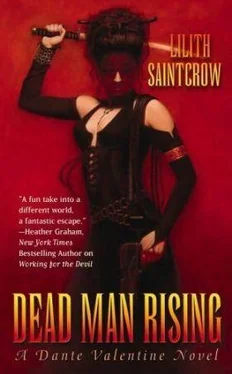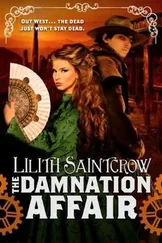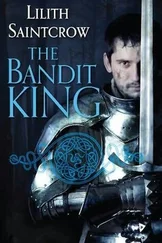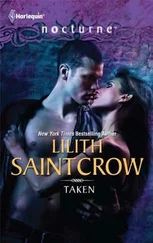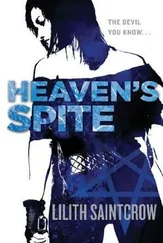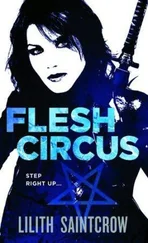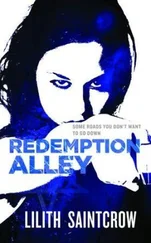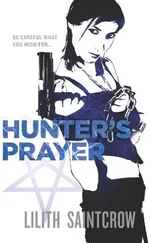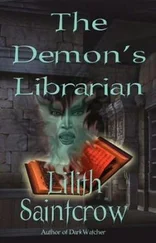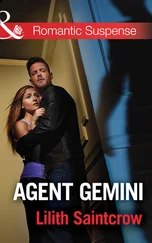And being near him would speed the healing even more. But the grief and the guilt, would those go away? Did I want them to, would I still be human if I no longer felt that pain?
"Dante?" Japhrimel asked.
"Last time I checked, I was even with the Devil. He got the Egg back." My breath hitched in, almost a silent gasp. Though he's been sending me letters. If he sends another one, Japhrimel, will you throw it away? Or will you open it? And if he knows you're alive, what will the letter say?
I couldn't bring myself to worry about it.
"Then let him wait," Japhrimel said, and his mouth touched mine. I didn't ask him again where we were going.
It didn't matter.
THE NINE CANONS: AN INTRODUCTION
Lecture at the Stryker Lee Hegemony
School of Psionic Arts
Are we all present, then? Or at least physically here? (Faint laughter.) Very well. Let's start immediately, shall we?
Writing is an old art, one of the oldest abstract arts known to man. We presently believe the Sumerians to be the first to practice it, but given the perishable nature of much written work we may have overlooked other civilizations entirely—including the theory that somehow demons learned writing first and taught it to humans. (More faint laughter.) I see the Magi students are not chortling. Good.
The cuneiform of the Sumerians represents for us a critical development in human understanding: the need to convey reality with symbols.
Ever since its inception, writing has been regarded as an art that smacks of the magickal. For example, a large part of Egyptianica sorcery was focused on writing. The Book of the Dead (here I refer to both the Egyptianica and Tibetan manuscripts of the same name) qualifies as an act of religion, which in several important aspects is indistinguishable from an act of sorcery, not the least in which it presumes that the written or spoken word—human language itself—can alter the behavior of an immutable law (namely, death), and another state of being, the afterlife. We are all familiar with the concept of Logos here, the magical act of naming to enforce one's will on the world? Good.
It is critical to understand one simple thing about the Canons. This is a magickal law you have had drilled into you ad nauseum, and I will repeat it again.
There is no such thing as an empty word. Write that down, underline it, brand it into your memory. The psionic arts are tightly regulated and accredited practitioners are held to a high standard because of this simple fact Word wedded to will—intent, that is—produces change in reality, which is the heart of even simple sorcery. Words are an extension of action; an action wedded to intent is sympathetic magick, the First Great Branch of sorcery. The Second Branch, encompassed by but distinct from the First, is runewitchery and other magickal writing. The propagandists of the twentieth century fumbled with this law, and their shortcomings as well as triumphs will be studied later this semester.
Let us take a short look at the Canon itself before we dive into theory, shall we?
The Nine Canons we have now had their nucleus in one Canon, from a manuscript dating to just prior the Seventy Days War. As you will no doubt recall, just prior to the War, the Awakening was beginning, and a renascence of occult knowledge as well as workable techniques for controlling Power were flourishing, both in the subversive stratum of noncitizenry in the Republic of Gilead as well as in what we now refer to as the Putchkin Alliance. This particular Canon, today known as the Jessenblack Runes and the first half-canto of the Nine, was codified by a nameless person in Stambul. It was first distributed among the ceremonial magicians in that city as a set of broadsheets, stapled together and extremely perishable. The great revolution in the Jessenblack Runes was their accessibility—they are never more than two syllables, and were distilled from several different occult traditions. They are more properly glyphs than runes—Question? No? Very well.
We know very little about who discovered the actual technique for distilling a rune, but history has provided us with some interesting candidates, any one of whom would be an excellent subject choice for your term paper, by the way. Let us explode one myth right now: Saint Crowley the Magi had nothing to do with the Jessenblacks, though his strain of magickal theory certainly fed the spirit of experimentation that bore such fruit during the Awakening itself.
The easiest and best theory is that the Jessenblacks were simply in the right place at the right time. Due to the explosion of psionic ability during the Awakening, any set of runes would have done just as well. However, the Jessenblacks were easy, they were simple, and they worked nine times out of ten—which is far more than many other pre-Awakening occult practitioners could say.
The rest of the Canons were added in dribs and drabs over the next century of magickal experimentation, leaving us with the Nine we know today, which encompass by themselves an entire branch of magick. Not only that, but the fact that the Nine have been used by so many psions for so long has given them a quantum increase in the amount of untapped Power each rune possesses.
This is of course a simplification. The Canons are not powerful in and of themselves. Like any symbol, they are fueled by human intent. Think of it this way, especially those of you talented as runewitches: The Nine Canons are a set of doors. It remains up to you to expend the effort of opening the door. Once opened, the door will stay open as long as you hold it, and the combined weight of expectation—of Power—built up over successive uses of the rune is there to be tapped.
Now, can anyone tell me what holds the door open? Yes, Miss Valdez? (Indistinct murmur) Very good!
Your sorcerous Will holds the door open, which is why practice is so important to runewitchery. This is a feedback cycle. Your Will is strengthened and trained by attention and practice, allowing you to hold the door open and incidentally adding the weight of your expectation to the symbol countless other psions have used. This is the reason the Canons are required study for every psion, not just runewitches or Ceremonials.
Now, if you will open your books to page eleven, we will begin the first Canto…
(Fadeout.)
Term Paper: Magi Studies 403
East Merican Hegemony Academy of Psionic Arts
Dacon Whitaker
The current strain of Magi thought has undergone a complete reverse in past years. This paper examines the attitudes most current among active Magi practitioners and touches on how this change came about.
The pre-Awakening view of demons was hazy in the extreme, tainted by the Religions of Submission. Of all spiritual practices, only Vaudun and Santeriana came close to a workable theory of interaction with noncorporeal or sometimes-noncorporeal beings. This had begun to change by the end of the twenty-first century, when a vibrant counterculture existed, most notably of those studying Saint Crowley's work. However, the Republic of Gilead interrupted most serious experimentation in this area, and the confusion of the Seventy Days War, as well as the social and economic dislocation caused by the Awakening, further interfered.
Between the Awakening and the advent of Adrienne Spocarelli's work, demons were defined as primarily non-corporeal as well as ethically unsound and morally capricious—in essence, trickster demigods, against whom humans are essentially powerless and can only beg for favors from. Magi theory at that time held that whatever place demons existed in prior to and after their visits to our physical plane was an environment unsuitable to flesh-and-blood beings. This attitude was widespread even though Broward, in his classic study, points out that demons do indeed seem to breathe and bleed (witness the woodcuts of the Sterne collection and the holostill captures of the Manque Incident.) Broward's observations were treated with the assumption that when demons enter our physical plane, they take on a physical body and so, can be hurt. (Adrienne Spocarelli, in her famous essay What's Flesh Got To Do With It ? remarked wryly that a thermonuclear strike might even work to kill a demon—with a whole lot of luck.)
Читать дальше
